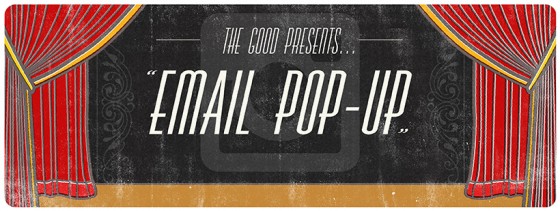
How to Build a More Valuable Email List
To increase email signups, many brands have resorted to disruptive and ill-timed email collection tactics like email pop-ups. There's a better way.
The most valuable email list is a list that is filled with engaged customers. Customers who are eager to buy your products and tout your brand to family and friends.
The problem is, most brands are using a tactic to capture emails – the email pop-up – which is directly opposed to the type of site experience that we know drives engagement and sales.
Instead of helping the customer achieve their goals, the email pop-up that appears seconds after the visitor arrives on your site not only interrupts this process, it actually gets in the way, annoying customers.
We’re not the only ones to say this either. In fact, Google will penalize websites with ‘intrusive interstitials’ or pop-ups that interfere with the site experience.
Defenders of email pop-ups point to metrics that prove that they are effective in adding addresses to lists. What is not as clear is the potential that those emails will belong to people who only joined to make the pop-up go away.
They may be less likely to spend money on your site and more likely to click delete, unsubscribe or worse, mark it as spam – as soon as the first email is received.
Watch our Instagram video on Email Pop-up Mellodrama (10sec).
Why not build a more valuable email list, filled with quality customers, using well timed and well placed email requests? Here are four ways you can.
4 ways to build a more valuable email list
1. Experiment with timing and placement of the email form.
Timing your email request is the single most important factor in building a quality email list. A well timed email request tells your customer you value their information (and time).
Proper placement of the request helps capture emails during the natural course of your customer’s visit, yielding quality email addresses.
To find the proper placement, first, study how your most engaged customers are using your site and then put the email sign-up where you think they will be.
For example, the bottom of a detailed product description can be a great location to place an email sign up form. Customers who are digging into the details about your brand or a particular product are already interested in you. And they would likely welcome the opportunity to hear from you.
Other placements to consider are in the footer, on the About page or on the top line (Hello) bar. Note: The sidebar is a very common place for the email sign-up form, but it’s often overlooked or ignored.
Timing your email request is the most important factor in building a quality email list. Click To TweetAnd yes, there are even times the pop-up may be appropriate and that is if (and only if) that interruption occurs as a logical next step in the context of their visit.
For example, a customer who is spending time researching into a product’s specs and has been on the product page for more than a minute, might respond very positively to a pop-up that offers them more information and a purchase incentive in exchange for their email.
2. Pay it forward with incentives.
Before a customer is asked for any information, they should have received something of value first.
This could take the form of free shipping or an offer that enables them to save 15% when purchasing. Paying it forward like this lets the customer know you value their time, and is a way of acknowledging the value of the information you are asking from them.
It also reinforces their perception of your brand’s approach and commitment to greater customer service.
3. Ask for the email address at checkout.
Most customers will provide their email to you at checkout so they can receive tracking information and a receipt. This is a time to also provide them with an incentive to accept your request to sign up for your email list.
4. Include an incentive to sign up in the post purchase follow-up email.
When you send your customer their receipt and tracking information, offer them a personalized incentive to sign-up for future emails such as an offer for future discounts, free shipping, or 20% off their next purchase.
Successfully growing your email list with quality email addresses hinges on your ability to seamlessly integrate the timely request into helpful experiences on your site.
Interrupting the site experience with pop-ups or other distractions may add emails to your list, but the results those emails produce may or may not drive the results your brand is looking for.
